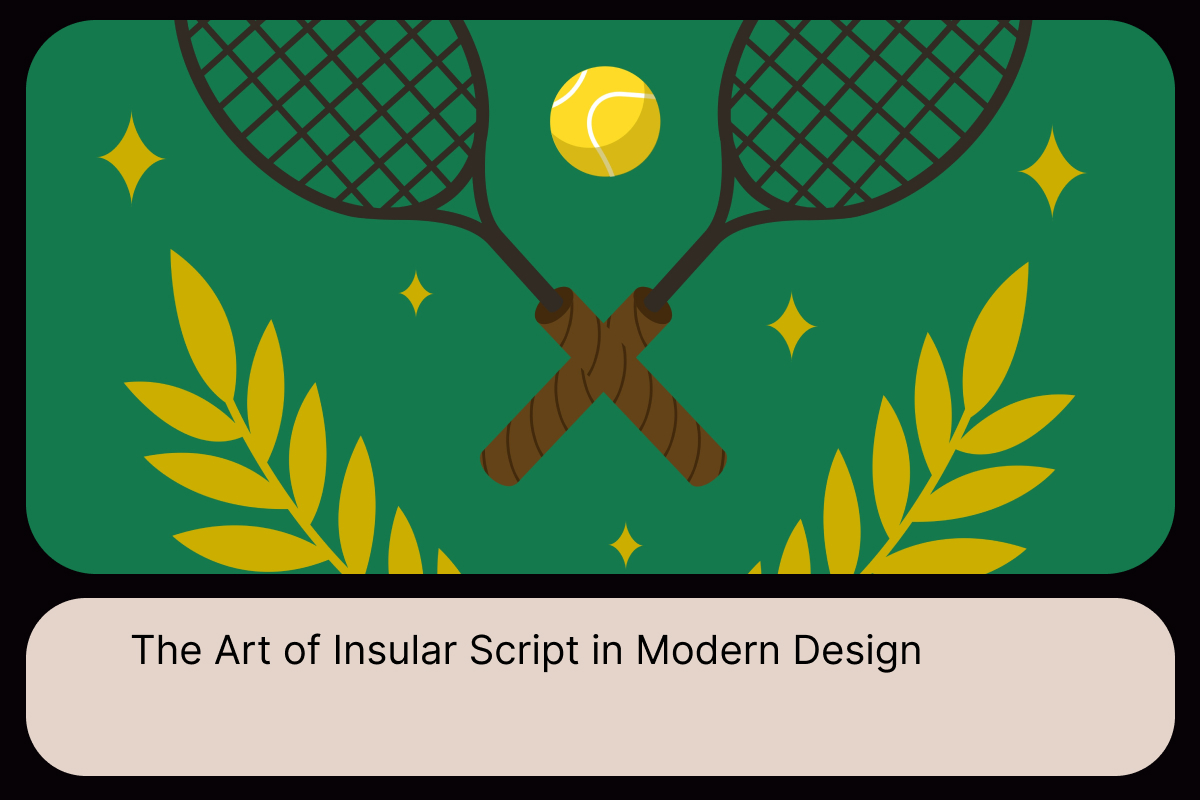The breathtaking Insular scripts developed by Celtic monks between the 6th and 9th centuries continue to inspire designers today. These intricate letterforms – the ancestors of contemporary celtic fonts – represent a golden age of manuscript illumination where writing became sacred art. Let’s explore how these ancient styles can elevate modern design projects with their timeless beauty and symbolic power.
Read more: Knotwork Typography: Designing with Celtic Traditions
1. Understanding Insular Script’s Legacy
Key characteristics that define Insular writing:
- Majestic majuscules – Ornamental initials bursting with zoomorphic details
- Dense minuscules – Compact text blocks with distinctive wedge serifs
- Strategic spacing – Generous interlinear breathing room
- Color symbolism – Vibrant pigments from precious materials
The Golden Ratio
Insular scribes used precise geometric proportions that still satisfy modern design sensibilities.
2. Modern Revivals of Insular Aesthetics
Contemporary applications that honor tradition:
Branding with History
Irish cultural organizations using authentic letterforms
Editorial Prestige
Literary journals featuring Insular-inspired drop caps
Digital Spirituality
Religious apps incorporating manuscript aesthetics
Gaming Worlds
Fantasy interfaces with adapted Insular elements
3. Technical Mastery for Authentic Effects
Recreating Insular magic requires:
- Pen angle discipline – Maintaining 30-45 degree strokes
- Ink knowledge – Understanding period iron gall recipes
- Parchment textures – Simulating vellum’s tooth and bleed
- Color palettes – Authentic ochres, woad blues, and vermilions
Pro Tip
Study actual manuscript folios – digital reproductions often miss subtle textural details.
4. Digital Tools for Ancient Styles
Bridging past and present:
- Vector brushes mimicking quill characteristics
- Texture overlays for authentic parchment effects
- Color correction matching aged pigments
- 3D rendering of raised illumination
5. Ethical Considerations
Responsible use of sacred scripts:
- Respecting religious contexts
- Avoiding cultural appropriation
- Researching symbolic meanings
- Crediting historical sources
6. Resources for Contemporary Practitioners
Where to find authentic inspiration:
- High-resolution manuscript digitizations
- Academic paleography studies
- Specialty celtic fonts with Insular features
- Modern calligraphers reviving the tradition
Conclusion: Writing as Illumination
Insular script represents more than historical curiosity — it’s a living testament to the power of letters as sacred art. Today’s designers who engage with these forms and Celtic fonts don’t merely copy ancient styles; they participate in an unbroken chain of visual communication stretching back to scriptorium monks. Whether used sparingly in a logo or lavishly in an art piece, Insular and Celtic letterforms remind us that typography at its highest level transcends mere information to become a meditation on beauty itself.

